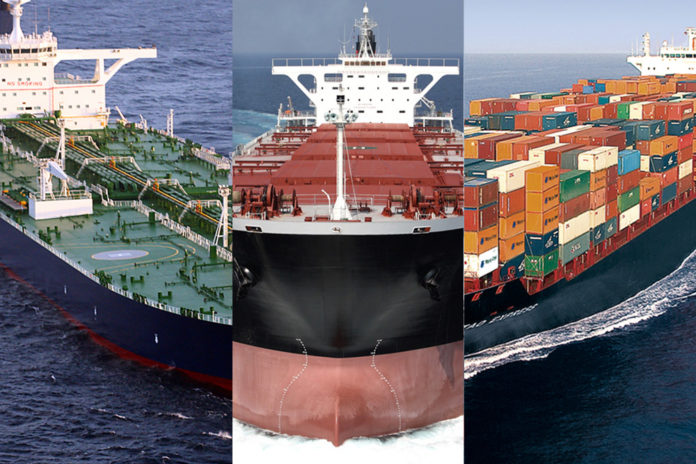
Overspill of container cargoes and loss of fleet productivity provide major boost to vessel earnings in project/breakbulk trades. By Michael Hollmann[ds_preview]
The extreme capacity shortages in global container trades, a healthy level of project cargo volumes and improved freight rates for bulk commodities all conspire to push profitability for multipurpose/heavy lift vessels to levels unseen so far.
Average period charter rates for 12,500 dwt multipurpose ships have more than doubled year-on-year after another 13% increase to more than 14,000 $/day in early September, according to Hamburg shipbroker Toepfer Transport. Fixtures are very rare due to a lack of open vessels as all operators keep a tight grip on the tonnage they have on charter or under commercial management. Single deals for 12,000 dwt ships are believed to have been done at $ 20,000 and higher for periods up to one year.
However, anecdotal reports from freight forwarders, brokers and ship operators themselves suggest that freight rates have climbed even faster, pushing daily vessel income (time charter equivalents, TCE) beyond record levels of the early/mid 2000’s. Advanced designs in the 12,000–17,000 dwt size bracket are today generating 6-digit dollar levels per day, market insiders tell HANSA. They are thus following in the footsteps of smaller container ships, with 1,700 TEU ships already netting levels around 200,000 $/day on the basis of spot cargo rates as early as June, according to Peter Döhle’s Maritime Overview report.
Freights escalating
Freight costs for breakbulk and heavy load cargoes on tramp project vessels have doubled or even tripled over the last 9–12 months, as rate increases accelerated over the past months. One forwarder said a recent charter trip he had arranged saw its price escalating from 500,000 $ to 1.7 mill. $ since obtaining a first carrier quote in late 2020. Another one highlighted a cargo lot out of Asia fixed at 600,000 $, compared with a quote of 350,000 $ only a few months earlier. A lot of project cargo owners including large-volume shippers from the wind turbine sector are reported to have been taken aback and squeezed by the sudden rise in freights since committing to delivered prices with their own customers over the past 6–12 months.
Representatives of plant manufacturers Uhde/Thyssenkrupp and Braunschweigische Maschinenbauanstalt (BMA) confirmed at the recent BHV Project Logistics Forum in Bremen that their budgets were strained, making renegotiations with customers necessary were possible.
Andreas Rolner, managing director of United Heavy Lift (UHL), admits that the current market rally is extreme but a rebound from the distressed rate levels over the past years was more than overdue, he argues. Though it may be hard for cargo owners to adjust to the new reality, previous budget targets of -7 or -8 % freight savings year-on-year were simply not sustainable, Rolner says. However, clients could avoid some of the pains by fixing longer-term forward contracts instead of booking most of their requirements spot or prompt as in the past, making business more predictable and secure for themselves and for the carriers. This is little comfort, though, to shippers sitting on urgent cargoes as short term space availability is extremely tight – especially in the Far East, the main loading region for multipurpose vessels.
»Lead times for bookings have increased from 2–3 weeks back in March to 2–3 months in September and the backlog of cargo keeps growing«, explains Marko Stampehl from tramp project operator BBC Chartering. Hamburg-based dship Carriers are also booked out 60 days in advance for loadings in Asia, according to its managing director Lars Feller. The situation is significantly aggravated by port congestion and vessel queues in the Far East where terminal productivity remains subdued due to corona. »5–7 days waiting time is considered to be normal. However, we are also seeing cases of 15–20 days which are getting more frequent,« Feller points out.
Meanwhile cargo demand is still growing as the project carrier market gets swamped with full or part loads of containers and wind turbine equipment. »There is going to be run for capacity by turbine shippers from now until the end of the first quarter. Various projects for example in the Baltic Sea are waiting for urgent components,« Feller says.
Sources at major freight forwarders in Germany and Denmark also say that they expect a rush of cargo in the renewables sector. Justin Archard, partner of One World Shipbrokers, points out that the firm’s Market Sentiment Index (MSI) for project shipping has kept rising since its launch at the start of the year. The latest reading was up from 51.3 to 52.3 (50 = neutral, above 50 = optimistic). »There are no signs of letting up in the near term. All respondents to the most recent MSI predict the market will be stronger in 6 months time,« according to Archard.
Still overspill from containers
Although completely new mega projects could still be 1 or 2 years off, freight forwarders expect cargo tendering activity for midsize projects to pick up again towards the end of the year driven by the LNG, petrochemical and mining sectors. Not to forget, though, one supersize project already awarded and about to ramp up cargowise is Qatar Petroleum’s massive North Field expansion, with 1 mill. freight tons believed to come up for loading in 2022.
At the same time, mpp vessel supply continues to be strained by charter demand from the container trades. All major project carriers except a very few heavy load specialists are seen taking in container business on a regular basis these days. Some ships have even been fully committed to container trades for short-to-medium periods like the 2003-built Rickmers superflex type »Lila Mumbai« (Ex-»Rickmers Antwerp«). While most of its sisters were already broken up, this one has survived to earn some of the best earnings of its lifetime trading on behalf of BBC Chartering in the transpacific box trade. ?



















